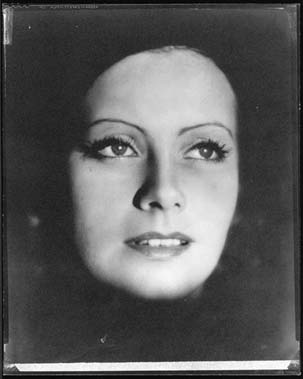
Topics in Photographic Preservation 2005, Volume 11, Article 15 (pp. 111-122)
A Capstone Research Project in the Mellon Advanced Residency Program in Photograph Conservation, 2001, at George Eastman House—International Museum of Photography and Film—Rochester NY and Image Permanence Institute at Rochester Institute of Technology—Rochester NY.
Presented at: American Institute for Conservation (AIC) Photographic Materials Group (PMG) Meeting, February 16th and 17 th 2001 at the Museum of Fine Art - Houston; Association of International Photography Art Dealers (AIPAD) Symposium 2001, 8–10 July 2001 - at the Metropolitan Museum of Art - New York City; IIC Nordic Group 16th Congress - Art Forgeries” 4 – 7 June 2003, Reykjavik, Iceland.
Due to increased valuations in the fine art photography market in the last years (see [1] in references), questions have arisen about ways of faking photographs; i.e. making them look like older materials. Certain methods have been postulated, such as the use of old papers, or the ageing of new papers.
Through a series of experiments and research into the most common postulations in order to show the possibility and manifestations of these methods, means have been provided to detect such impositions. A body of information is rendered, which extends the knowledge of the field in regard to paper types and characteristics.
The following have been identified as the most common and likely methods used for the recent incidents, which provoked much speculation in the minds of curators, collectors, art dealers and conservators:
— the use of contemporary paper stock;
— the use of outdated paper stock;
— the use of papers manufactured in Eastern Europe that resemble papers of the period 1920–1950;
— the use of chemistry to produce prints with aged characteristics;
— the use of copy negatives (negative from a print) and duplicate negatives (negative from a original negative) for print production.
This paper will therefore give answers to the following questions:
The investigations are limited to silver gelatin DOP, the most common photographic paper used between the wars and represented in the fine art photography production of this period, in which we have had impositions.
During the course of this project, the first question, above, could clearly be answered, with yes (Figure 1). This interesting fact, and the fact that contemporary papers are relatively easy detectable, caused most of this part of the work to shift to research on the use of outdated gelatin DOP. The next two questions, however, are also investigated and can be answered affirmatively. But there is still room for more research in the direction of altering contemporary gelatin DOP.
Because of the great variety of literature, web sites and manuals for the work with contemporary gelatin DOP, this has not been described very deeply in this project.
For the last question there are two answers. The use of copy negatives is to a certain degree detectable but this will probably change, with the aid of digital tools, in the near future. The use of duplicate negatives is almost not, or not visible/detectable, naturally depending on the quality of the darkroom work.

Fig. 1: Facsimile print from the project: Nickolas Muray, portrait of Greta Garbo (print from a copy negative of an original negative on Defender Velour Black, exp.: 5/1944. (with the friendly permission of the Curator) in the conservation lab at the George Eastman House — International Museum of Photography and Film
There is nothing new about the use of outdated gelatin developing-out paper stock (gelatin — DOP). The use of outdated papers (Figure 2) is a tradition almost as old as the production of the material itself. Photographers had, and have, different reasons for using outdated material. It could, at times, be a matter of having difficulties finding the right materials (like after World War II); old black-and-white papers could sometimes be of greater variety, and the properties of aged materials could be interesting in the production of facsimile prints from originals. The degree of difficulty in working with these materials depends on the condition of the photographic paper and the skill of the photographer. The possibilities with old materials are quite amazing when optimal circumstances are found. It is achievable to make very good prints from outdated papers that match the print quality of prints from the production time of this photographic paper.
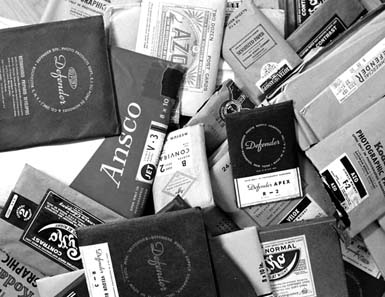
Fig. 2: Collection of outdated gelatin DOP. copyright © Jens Gold, 2001. The reproductions and facsimile of the George Eastman House Nickolas Muray prints
A majority of the material for this project was found in old literature and in interviewing photographers in Germany, the Czech Republic and the USA. The interviewed photographers had been working extensively with outdated materials. The research of one person in particular has been essential for the success of this project. In 1951 the Czech photo chemist Premysl Koblic published a book entitled: “Vyuzití Vadného Fotografického Materiálu” or in English: “Exploiting Defective Photographic Materials”.
This book was only published in the former Peoples Republic of Czechoslovakia and was never translated from Czech into another language. The information about this book originated from Ivan Lutterer † photographer from Prague. A specialist in Slavic languages including Czech, Kristin Dittrich-Kahl has been very helpful in getting the major part of this book translated into German. This has enabled the author to work with it and utilize much of the information in this paper. This information is now 50 years old, and the photographic papers that it describes are even older, i.e. 60 – 80 years (see list of outdated papers in the end of this article). This book has been a great help and the formulae's in it have usually needed only small changes depending on the working material.
In the following, information about the work with outdated developing-out papers is given. The materials worked with in this project are way past the expiration date. Some of these developing-out papers are 60–80 years old. Common problems with outdated gelatin DOP are outlined together with information on how to achieve the best results with such problematic papers. The focus is on the practical issues of working with these materials, and gives no philosophical discussion about forgery.
The major problem, fog, is a product of a process that starts with the beginning of the emulsion production, and continues until the photographic material is developed. The correct term for the process is ripening. During the ripening, sensitivity centers are formed on the surface of the silver halide crystal. These sensitivity centers are very small specks of sulfur on the silver halide crystal surface. The whole process is not completely understood, but sulfur seems to be essential for that process. Sulfur comes out of the photographic gelatin or is also added, together with several other compounds, to the emulsion during production. The sensitivity centers can become a development center when the silver halide crystal is hit by a light wave. Then electrons, which were knocked from a bromide (or other halogen) by the light wave, wander to the sensitivity center in the crystal and here reduce silver ions to a small number of silver atoms. Four or more silver atoms must be present in a silver halide crystal in order for it to be developed, and they must be collected together in a single group. The whole theory, from 1938, is named after the two scientists Gurney and Mott who first described it (Bunting, R.K. 1987, Jungle/Hübner 1989, Krafft/Steiner 1978, Stroebel/Compton/Current/Zakia 1989).
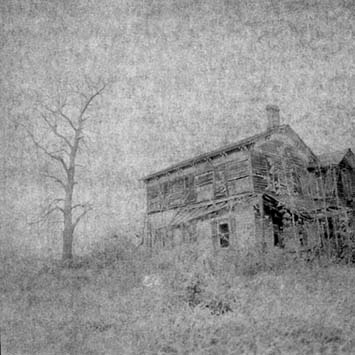
Fig. 3: Fogged print (Velox paper, exp.: 1932). copyright © Jens Gold, 2001. The reproductions and facsimile of the George Eastman House Nickolas Muray prints
It is known that heat, moisture and certain gases in the environment, over a longer period of time also can help to build development centers in an emulsion. This phenomenon is known as “fog” or non-image silver (Figure 3). It is called fog because it builds a kind of even exposure over the whole image surface. Since the ripening process” continues over time, photographic paper manufacturers cannot guarantee that an emulsion after a certain time, under normal conditions, does not develop non-image silver. That is why all these materials have an expiration date. To slow down this process, photographers often store their materials in freezers or at least in a cold and dry room (Koblic 1951).
Bubbles in the gelatin emulsion layer (Figure 4) appear quite often on outdated material during processing. It is associated with the deterioration processes of the gelatin. It happens most frequently when strong alkaline developers and strong ammonium thiosulfate fixers are used. It is often connected to a prolonged stay in warm developer and fixing bath. A good way to avoid the “bubble problem” is to use a tanning developer or a pre-wash in a tanning bath. The use of a 10% sodium thiosulfate fixer is also recommended. The temperature of the developer and fixer should, in this case, be lower than normally recommended.
It should be noted that gelatin on very old papers has often hardened, something that works against the formation of bubbles. However, this hardened gelatin can pose other problems in processing.
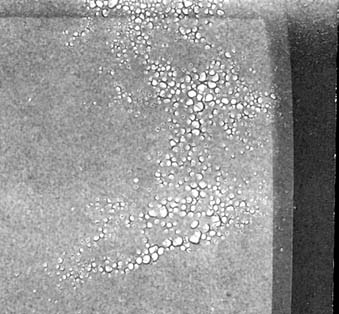
Fig. 4: Bubbles in the gelatin emulsion. copyright © Jens Gold, 2001. The reproductions and facsimile of the George Eastman House Nickolas Muray prints
It is known that over time and in poor storage conditions (dry air, pressure from storing the papers in piles, change from moist conditions to dry conditions, air pollution, etc.) the gelatin on photographic papers hardens and changes, thereby changing its behavior in the processing solutions. The liquid cannot absorb evenly into the emulsion (Figure 5), and that can make it difficult to develop an even picture on an outdated paper. Stripes and spots (pressure marks) of under-developed areas may appear. In most circumstances it is possible to avoid such problems. If the paper also has a fogging problem, it may be treated with a potassium permanganate bath, which removes the non-image silver and additionally softens the gelatin. Other means of soften the gelatin is to add more Sodium carbonate [Soda] or Potassium carbonate [Potash] to the developer, or generally raise the pH of the developing solution.
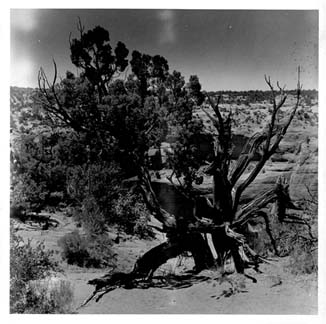
Fig. 5: Areas with hardened gelatin in a print. copyright © Jens Gold, 2001. The reproductions and facsimile of the George Eastman House Nickolas Muray prints
There is a multitude of reasons why yellowing of developing-out paper occurs, but in most cases there are two major ones. One is the age of the paper compared with the access of air to the material, and the other are mistakes made during the processing of the old photographic material. The mistakes made during processing of the papers include: use of old developer, old fixer, polluted processing baths (fixer in developer and developer in fixer) which cause the so-called dichroic fog, over-development, or in general the wrong processing times and temperatures, exhausted stop bath, and unclean and warm hands used to handle the paper during processing. Papers with the lowest sensitivity (portrait paper and contact paper) often have a higher tendency for yellowing or getting colored fog than papers with a higher sensitivity (bromide paper). A frequent reason for yellowing is colloidal silver, which develops in the print because of too much sulfite in a contemporary developer. In that case it is better to use the old recipe, which is often found in the original paper package. Too much sulfite works for some of these old papers like fixer in the developer. It is also recommended to use about 50% more potassium bromide and 25% more potassium carbonate or sodium carbonate.
Mold and other little creatures” which like to digest gelatin and paper are frequently a problem for very old outdated gelatin DOP. It is possible to use attacked papers if the material is only contaminated on the edges. If the mold is already in the center of the paper it is impossible to print on it in sufficient quality. When the mold has digested the gelatin (and some times parts of the paper too) it will show big spots over the whole surface of the print after development (Figure 6). Sometimes it is already visible in the darkroom light. An obvious sign for mold is the typical smell when opening the paper box the first time and handling the materials. People with allergies should stay away from these materials. It is favorable to have a fume hood when working with molded papers.
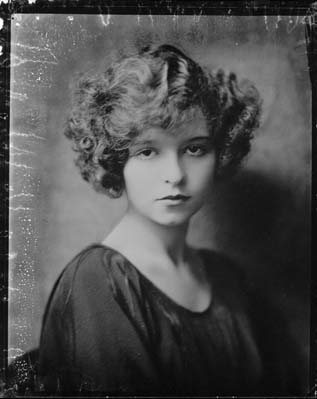
Fig. 6: Mold on photographic papers. (Nickolas Muray, portrait of Clara Bow (print from a copy negative on Defender velourblack … exp.: 5/1944)). copyright © Jens Gold, 2001. The reproductions and facsimile of the George Eastman House Nickolas Muray prints
Another observation made during the work with the outdated papers was the difference between double and single weight papers. It was quite common to have fogging problems with both types of paper. However, the single weight paper (from the same time and even the same type and brand) had a much greater tendency to develop non-image silver than the double weight paper.
For work with outdated papers it is beneficial to know how chemical development works, and what the compounds of a developing agent are good for. A general understanding of the chemistry helps when working with and adjusting the different compounds to the old material.
“The most important ingredient in a chemical developer is the developing agent or chemical reducer that converts the exposed silver halide to metallic silver. Most developing agents require a pH higher than 7 to function, and for this reason the developer also contains an alkali, sometimes referred to as the accelerator. In order to minimize oxidation of the developing agent by oxygen in the air, the solution also usually contains a preservative, most often a sulfite. A restrainer, usually a bromide, is also part of most developers. The restrainer has the effect of slowing the rate of development, but this effect is greater in the unexposed areas of the emulsion, thereby limiting spontaneous development, or chemical fog. The presence of restrainer in the developer formula also tends to minimize variations due to the release of halide ions during development, which would themselves act as restrainers. Bromides or other halides are also sometimes referred to as antifoggants, but this term is usually applied to a number of organic compounds that are used at much lower concentration than bromide. A developer formula may also include other compounds that accelerate development, provide more even development, prevent the formation of insoluble compounds, etc.” (Stroebel,/Compton/Current/Zakia 1989).
Changing the properties of contemporary gelatin DOP (removal of optical brighteners in modern materials)
There are many ways to change the properties of contemporary photographic paper in order to make it look old. For example the application of minor chemical and mechanical damages like stains, fading, scratches, losses, repairs … and even silver mirroring. During the work with this project it was demonstrated that these things are achievable, mostly without great difficulties. Many of the high priced photographs on today's art market are however printed on photographic paper produced before and during the introduction of optical brighteners (in the end of 1950's beginning of the 1960's) in the paper support. Papers with optical brighteners are relatively easy to detect, and it would therefore be desirable for a forger to remove them from the paper support and baryta layer (Figure 7). This is not an easy task though, because the molecule of an optical brightening agent is quite long. It also ties itself very well to the paper fibers and baryta layer. These chemicals are made to be very light fast, inert to a lot of chemicals and difficult to wash out. Experiments with removal of optical brighteners using agents from the paper industry were not very successful. The reason for this is the fact that the so-called optical brightener quenchers [cationic water-soluble polymers recommended for the efficient neutralization of the optical brightening effect of fluorescent whitening agents] are designed to remove optical brighteners in the stage of papermaking when recycled paper fibers are washed in the pulp.
The same washing” obviously does not work with the kind of paper-sheet like a print. Another way to remove a good amount of optical brightener would be to wash the prints extensively for several hours (Nishimura 2000). In order to protect the gelatin during such a harsh treatment, it is beneficial to have the print for about 10 minutes in a hardening bath prior to the washing process. Extensive exposure to ultra violet light can also reduce the optical brightener compounds, but it will harm the rest of the print as well (Messier 2001). Another (well known) way to suppress the optical brighteners is to dye the prints with certain colorants like the ones from tea or coffee or similar substances. This is simply done by immersing the prints in a bath made from tea or coffee mixtures etc. The way of getting the right tonality in the photographic paper is a question of experimenting.
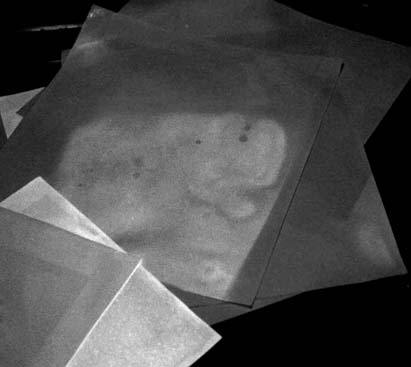
Fig. 7: Washing out of optical brighteners in a water bath (photographed in UV-light illumination). copyright © Jens Gold, 2001. The reproductions and facsimile of the George Eastman House Nickolas Muray prints
During this project it has become clear that the use of outdated and contemporary gelatin DOP in potential forgery can make authentication a difficult challenge for the investigator. The use of outdated material is particularly hard to detect. However, to produce a good facsimile” print of an original photographic artwork requires a level of advanced skill and experience in addition to having the access to an original that can be copied. Another problem is that access to original photographic material is limited.
There are methods of analysis in use and under development, which make it possible to recognize certain paper types, years of production etc. of a print. In the following are two of newer methods worth mentioning to identify paper types and time of production listed:
— A very successful method to identify paper types is a paper fiber analysis, in use for some years now by paper and photograph conservator Paul Messier, together with FBI-scientist and paper specialist Walter Rantanen. The method allows identification of the specific properties of a paper type by examination of a very small paper sample under a microscope and comparing the extracted information with earlier collected information kept in a database. This makes it possible to get a link to a certain brand name, paper type and year of production of a photographic paper. (Compiler's Note: see Messier's article on pages 123–130 of this volume.)
— Another method that is still on an experimental stage is the “Edge Reflection Analysis” (ERA). This method was developed in 2001 in the Mellon Advanced Residency Program in Photograph Conservation by German photo engineer Klaus Pollmeier in cooperation with the Rochester Institute of Technology. The ERA records digitally the surface structure of the photographic paper and compares the information with data previously fed into a computer.
All of present methods look for the typical “finger print” (property) of a photographic material and are successful in revealing whether new or outdated photographic papers, but papers unusual for a certain artist/photographer, are used. The methods reach their limitations when, for example, a right paper type of the right time period is used and the artists way of printing also is taken into consideration and applied (Figure: 8). There is no way of detecting whether such a print is genuine or false. A “successful” forger therefore, must produce a work that fits into a certain pattern, not only the quality and signs of age but also the photographic material and the years of production. This means that it is possible to a certain degree for such works to appear on the market, but production of such photographic work is difficult and complex. Assistance in getting into the infrastructure of the art market is also needed, because without provenience even a high quality forgery has no market.
Like already said in the beginning, the market for photography grows, and today photographs are obviously included in the high prized art market. The temptation for some to forge such objects and bring them on the market might be high. It has to be expected that various kinds of photographic materials from today to an extent already have been stored in order to produce the right print” tomorrow. What does this mean for the investigator? — Unfortunately there is no sign that there will be a method to detect the actual developing time/production time of a print (time between printing of the image and possible analyses) made with old photographic paper. However, over the course of this project it became clear that existing methods of identifying photographic materials should be extended by using methods which allow the detection of materials and chemicals that are part of the forgery but not fit in the time period of the original, or not fit in at all. For the gelatin developing out paper from the discussed time frame, this could be traces of optical brightening agents coming from modern developers or prints in the wash water, modern synthetic antifogging agents (Benzotriazole, 5-nitro-benzimidazole) from modern stock developers or custom made ones, and so on.
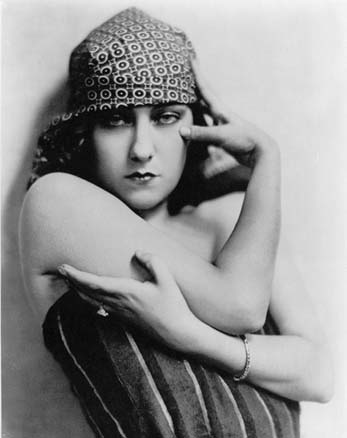
Fig. 8: Facsimile print from the project: Nickolas Muray, portrait of Gloria Swanson (print from a copy negative on Kodak Opal P, warm black, old ivory, lustre, fine grained, d. w., exp.: 8/1941). (with the friendly permission of the Curator) in the conservation lab at the George Eastman House — International Museum of Photography and Film
The author wishes to thank the following:
The Andrew W. Mellon Foundation and the Getty Grant Program; Grant Romer, Director of the Andrew W. Mellon Advanced Residency Program in Photograph Conservation, Jim Reilly, Director of the Image Permanence Institute at Rochester Institute of Technology and Co-Director of the Andrew W. Mellon Advanced Residency Program in Photograph Conservation; Paul Messier, Conservator of Photographs and Works on Paper, Boston; Douglas Nishimura, Research Scientist at Image Permanence Institute at Rochester Institute of Technology; Michael Hager, Photographer, Museum Photographics — Rochester N.Y.; Ivan Lutterer †, Photographer in Prague and Fellow in the Andrew W. Mellon Advanced Residency Program in Photograph Conservation, Giovanna Di Pietro, Researcher at Laboratory of Scientific Photography at the University of Basel, Kathrine Kilde, Paper and Photograph Conservator in Oslo; and of course all colleagues, fellows, interns and staff at the George Eastman House for their help and support.
[1] Meeting of the Photographic Materials Group (PMG) of the American Institute for Conservation (AIC) February 16th and 17th 2001 at the Museum of Fine Art - Houston; Association of International Photography Art Dealers (AIPAD) Symposium 2001, 8–10 July 2001 - at the Metropolitan Museum of Art - New York City; IIC Nordic Group 16th Congress - “Art Forgeries” 4–7 June 2003, Reykjavik, Iceland. Articles and Internet pages:
[1] Gelant D. S.: Provenance Invented and Faked Man Rays - Be on Your Avant-Garde!, Maine Antique Digest (www.maineantiquedigest.com/articles/avan0498.htm), April 1998;
Glueck G.: Authenticity of Famed Photographer's Prints Scrutinized, The New York Times, Nov. 1999.
Perloff S.: Lewis Hine Prints in Dispute, The Photograph Collector, Vol. 20, No. 10, Oct. 20, 1999; The Disputed Lewis Hine Prints: The Story Until Now, The Photograph Collector, Vol. 21, No. 2, Feb. 15, 2000; Settlement in Hine Case Leaves Many Questions, The Photograph Collector, Vol. 22, No. 5, May 14, 2001.
Falkenstein M.: The Hine Question - Some of Lewis Hine's vintage prints appear to have been forged. ARTnews, Vol. 99, No. 5, May 2000. Fake vintage photographs - Prontoprints, The Economist, Vol. 360, No. 8229, July 7, 2001.
Blumenthal R.: Shadows Cast by Forgery: The F.B.I. Investigates Lewis Hine Prints, The New York Times, Aug. 16. 2001.
Blumenthal R.: The FBI Investigates Complaints About Lewis Hine Prints, Museum Security Mailinglist Reports, Aug. 16, 2001 (www.museum-security.org/01/155.html)
Willenbrock H. Interview mit Werner Bokelberg: Nachgefragt: Wenn wir Bilder kaufen lernen/Warum für ein Foto 1,5 Millionen Mark bezahlt werden, Brandeins Wirtschaftsmagazin, Ausgabe 1, 2000 (www.brandeins.de/magazin/archiv/2000/ausgabe_01/redaktion/artikel14.html).
Robinson W.: man ray forgeries exposed, Museum Security Mailing-list Reports (www.museum-security.org/97/17121997.html) Date 02.02.2003.
Bunting, R. K. 1987. The Chemistry of Photography. Normal, IL: Photoglass Press. 36–38 p.
Junge, K. W./ Hübner, G. 1989. Fotografische Chemie. Germany: Fotokinoverlag Leipzig. 20–22.
Koblic P. 1951.
Exploiting Defective Photographic Materials. Prague, Czechoslovakia. 17–21, 23–26, 26–28, 36–40, 41 p.
Krafft, D./ Steiner, R. 1978. Lehrbuch für Fotografen. Germany: Fotokinoverlag Leipzig. 28–29.
Messier P. 2001. Personal communication. Conservation of Photographs and Works on Paper, Boston, MA, USA.
Nishimura D.W. 2000. Personal communication. Image Permanence Institute - Rochester Institute of Technology, Rochester, NY, USA.
Stroebel, L./ Compton, J./ Current, I./ Zakia, R. 1989. Basic Photographic Materials and Processes. Boston, London: Focal Press. 199–200, 215–216, 216–217, 226–227 p.
Figures 2 – 7: are copyright © ( Jens Gold, 2001. The reproductions and facsimile of the George Eastman House Nickolas Muray prints (Figures 1 & 8) were made (with the friendly permission of the Curator) in the conservation lab at the George Eastman House – International Museum of Photography and Film
Jens Gold
Photograph Conservator, Preus Museum, Norway 2005
Papers presented in Topics in Photographic Preservation, Volume Eleven have not undergone a formal process of peer review.